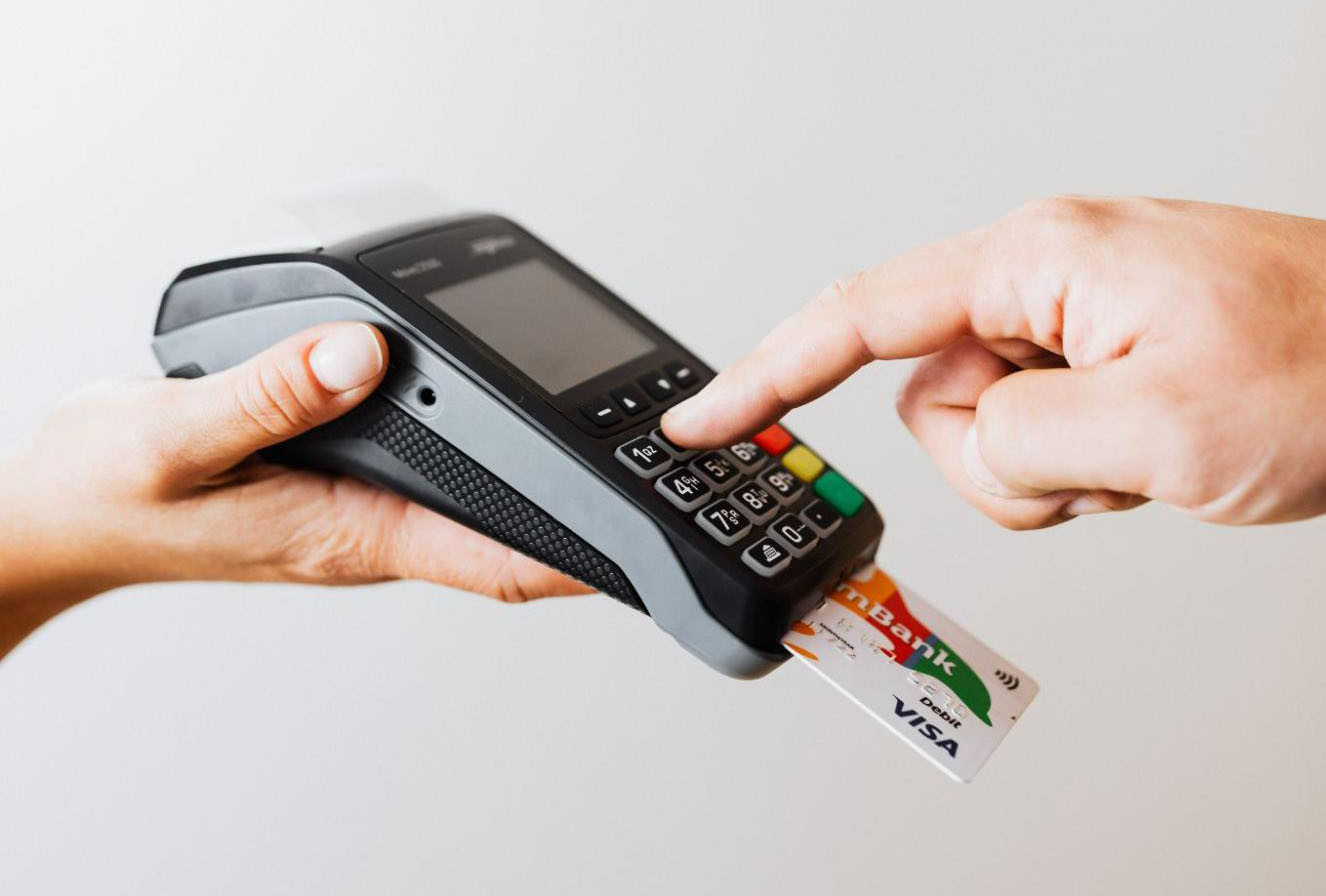To start understanding the Interchange Plus Pricing Model, it’s necessary first to comprehend what are interchange fees and how they are calculated. In addition, you should know about the other popular pricing models to be able to compare their characteristics and decide among them which will be the most beneficial to your business.
What are interchange fees and how are they calculated?
Every time a consumer uses a credit or debit card to make a purchase from a business, the merchant is required to pay transaction fees (interchange fees) to their bank. Each credit card brand, Visa for example, has its own interchange fees for each card type (Visa Classic/Gold/Platinum 1.25%, Infinite 1.57%, Infinite Privilege 2.08%), plus a card brand fee (0.10%). These fees are collected by the merchant’s bank to cover handling expenses, fraud, bad debt costs, and risks associated with payment approval. The debit card also charges transaction fees; however, these are lower due to the level of risk associated with debit transactions.
Credit card issuers set and periodically modify their interchange rates based on the expenses associated with moving money, the time value of money in terms of current interest rates, and the relative risk involved. For instance, rates for Visa and Mastercard are changed twice a year, in April and October. While there are other costs associated with accepting credit and debit cards, interchange fees are the most significant of all fees paid by businesses to banks.
Also, there are 2 main rates associated with credit card fees. Qualified, and Non-Qualified Rates. Qualified can be called the base rate, ie Visa is 1.25% for a credit card with no loyalty or extra points programs, this is what the banks and acquirers would pay Visa for a plain Visa card charge, plus the card brand fee. A Non-Qualified charge is an uplift fee for any card with a loyalty or points program associated with that issued card, these rates vary as there are many different types of programs available. Also, business issued cards also carry a higher interchange rate.
Click here for the current Interchange Fees.
Types of pricing models
There are three types of pricing models in credit card processing:
- Flat Rate
- Tiered Pricing
- Interchange Plus
Flat rate
Flat rate is popular among small business owners as it’s a simple way to calculate credit card processing fees. The flat rate means the merchant will always pay the same static rate for all credit card transactions regardless of the volatility of the interchange rates of each card brand (Visa, Mastercard, Amex) and card type. This is the most secure method to know what your cost will be for accepting a credit card purchases, in so that you can calculate your costs and know where you stand on accepting a credit card payment.
Tiered pricing
Merchant account providers "sell" tiered pricing to offer usually a lower rate on qualified transactions, like 1.35% for example, but then they increase fees on non-qualified transactions. Tiered pricing is commonly used as deceptive marketing on pricing by merchant providers as it`s hard to determine how much the merchant is paying on top of the interchange fees for non-qualified transactions, which many times can be the most of the sales volume, while the qualified transactions can be 35% only of the credit card sales transactions.
Interchange plus
Interchange plus is one of the most popular pricing models nowadays and the most transparent for merchant accounts. Interchange plus means the payment processor provider will pass through all the fees from banks and card brands to the merchant (Visa, Mastercard, Amex) and add a fixed markup on these rates which usually is negotiated with the merchant according to their sales volume. In other words, with the Interchange Plus pricing, the merchant will see an interchange plus 40 basis points, or 0.40%, for example. That will be the profit for the payment processor and all other fees will be passed through at cost, but vary due to card type and Non-Qualified program they are associated with.
Why Interchange Plus?
Most merchants usually have a debate about choosing either a flat rate or interchange plus. Undoubtedly, one of the advantages of the flat rate is that merchants always pay the same rate, regardless of the type of card being used by their clients. On the other hand, the interchange plus model has become more popular because, in addition to being a more transparent pricing model, it also usually saves the merchant more money. As a comparison, let's say that a merchant chose a flat rate pricing model of 2.6%, and a customer uses a credit card whose interchange rate is 1.5%, in this case, scenario, the merchant will be paying to their processor bank 1.1% over the interchange cost on that transaction. On the other hand, if the merchant had an interchange plus pricing model with a 40-basis points markup rate, the merchant would be paying 1.9% on that transaction and would save 70 basis points on that sale.
In summary, Interchange plus can be confusing to understand as the interchange rates change every year, but it gives to the merchant more flexibility in their pricing model and help them to save money on transactions in which the interchange rates are lower.
Have questions?
Universal Payments is ready to help you with any questions you might have regarding payment processing solutions. Please reach out to our team merchantservices@universalpayments.ca.
